Table of Contents:
1. What is Multi-Channel Marketing?
2. How is it different from Cross-Channel Marketing?
3. Importance of Multi-Channel Marketing in day-to-day marketing campaigns
4. How have businesses adapted to multi-Screen behavior?
5. What are the real benefits of Multi-Channel Marketing?
6. What does your business need to do right?
7. How easy is it to create an effective Multi-Channel Marketing campaign?
What is Multi-Channel Marketing?
The life of a marketer was drastically different back when the Internet wasn’t invented. Eons ago, FMCG behemoth Procter & Gamble employed an entire army of people to go door-to-door in America to engage with their primary target audience: housewives. Today, customer engagement is an entire science in itself.
As users begin to spend more time online, brands have adapted by employing multi-channel marketing strategies that take customer engagement to the next level.
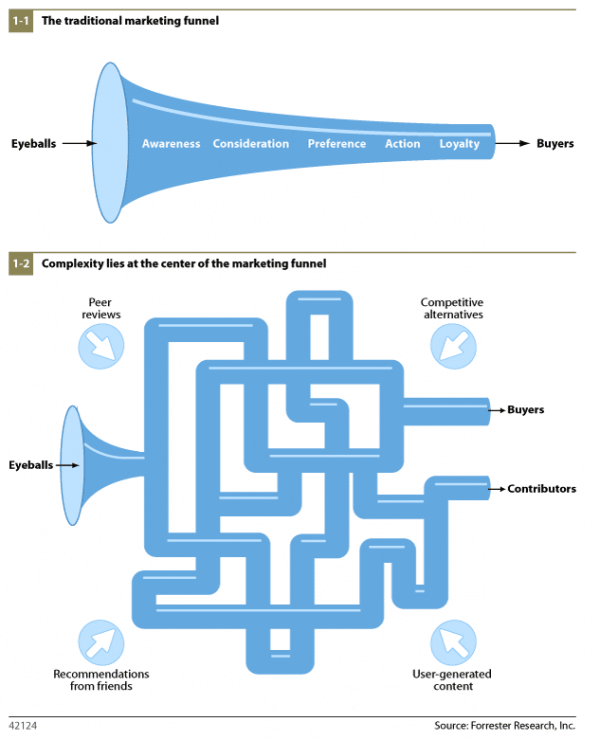
How the Sales Funnel has evolved over the years
Simply put, Multi-Channel marketing refers to the practice of communicating with your users across multiple channels to maximize the possibility of engagement. What that means is that a marketer would cohesively leverage mediums to reach the end-user like,
- SMS
- In-App Message
- Push Notification
- Web Push Notification
- Web Messages
How is it different from Cross-Channel Marketing?
Cross-channel marketing takes data from every user touch-point (physical and digital) and makes it available for use across multiple engagement channels. It aims to create a seamless, holistic experience for a user by accounting for their online and offline activities in any engagement campaign.
Importance of Multi-Channel Marketing in day-to-day marketing campaigns
Multi-Channel Marketing is a logical solution to counter the phenomenon of Multi-Screen behavior. You will be hardly surprised if I tell you that our lives are increasingly dominated by screens.

Even when we are watching television, there is a high possibility of another device being used. Spurred on by better smartphones and cheap and abundant mobile data, people are consuming data like never before.
According to Google, there are 2 main factors that help classify multi-screen behavior:
Sequential Screening:
Here, users start off using 1 device and then move on to the next device based on a multitude of factors.
Simultaneous Screening:
This is the phenomenon where users are working on multiple devices at the same time to facilitate multi-tasking.
The average number of screens used by people is on a steady rise. The graph below confirms this with data.
As a marketer, it is critical to know on which marketing channel your audience is spending most of their time?
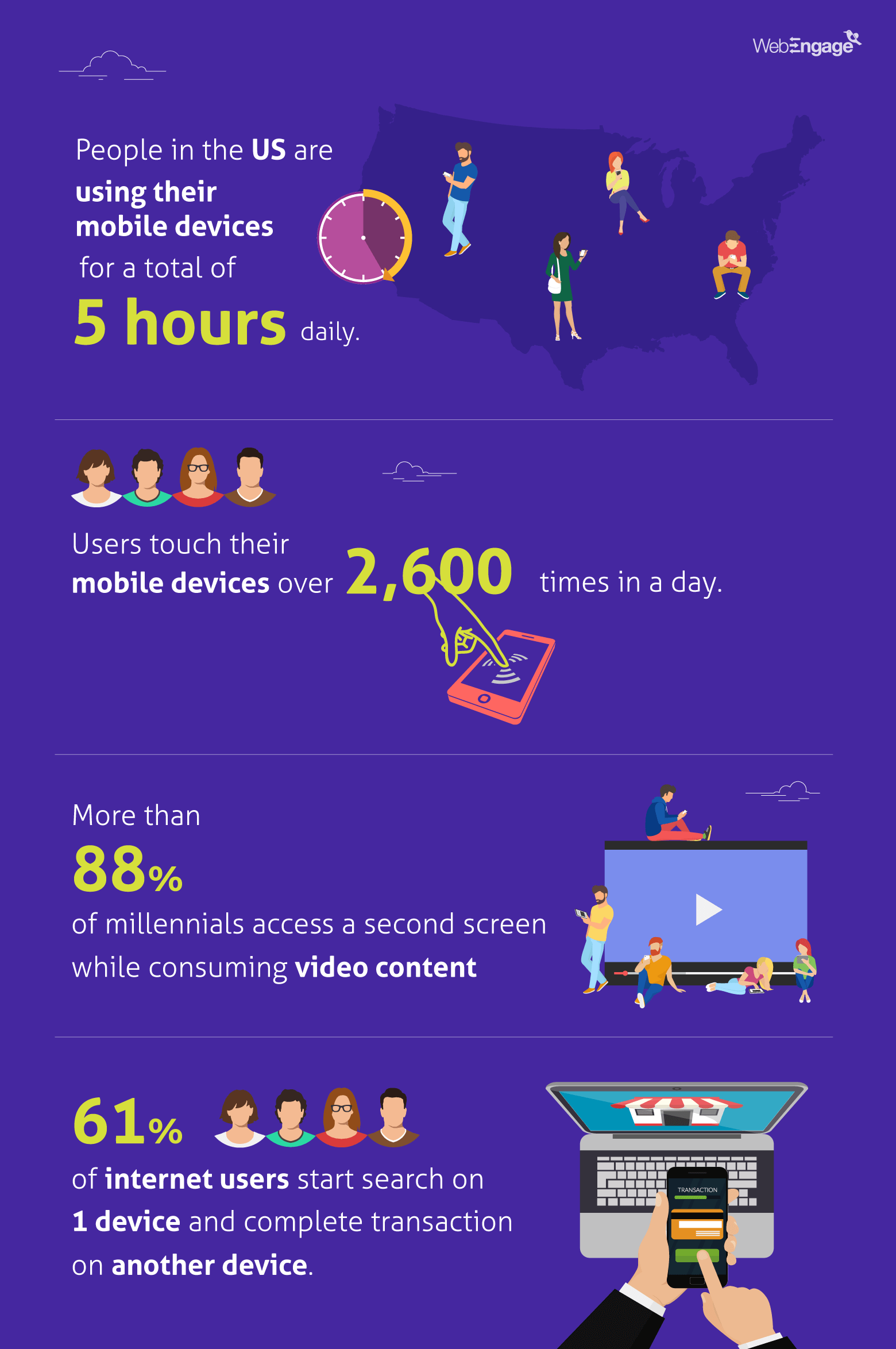
- People in the US are using their mobile devices for a total of 5 hours daily.
- Users touch their mobile devices over 2,600 times in a day.
- More than 88 percent of millennials access a second screen while consuming video content.
- 61 percent of internet users start a search on 1 device and complete transaction on another device.
How have businesses adapted to Multi-Screen behavior?
Based on the insight that 53 percent of consumers in the Netherlands use multiple screens while watching TV, AdScience partnered with a second-screen advertising specialist to create a synergistic engagement experience for users. The whole concept was to run ads on mobile devices whenever a commercial would air on TV.
They ran a campaign for a car manufacturer, and it resulted in a 72 percent increase in campaign CTR (Click-through Rate), and a 21 percent reduction in CPC (Cost Per Click) metrics.
What are the real benefits of Multi-Channel Marketing?
1. Be present where your users are
At any given point in time, your user might be online via multiple screens – desktop, mobile, tablet, even a smartwatch. With a Multi-Channel strategy in place, you can ensure the presence of your brand’s message at all those places where your users are actually active. This will help you increase your campaign engagement and conversions massively.
2. Create an intelligent engagement strategy
Use the power of data to understand usage patterns on a daily basis. For example, you can isolate the devices that were used to initiate search and complete purchases, and also determine the exact times when a particular device is being used.
3. Increase your brand’s impression share
You can reach all of those touchpoints that command the most amount of attention in a user’s life. Subjecting users to multiple impressions will reinforce the need for your product/service, and increase back of the mind awareness. The brand recall will shoot through the roof, and you will be able to drive up repeat purchases and user retention.
4. Create custom intent-driven campaigns for users
Use a combination of channels for reaching out to the users according to the intent of your campaign. If you want to provide critical financial information, then pairing SMS and Email makes sense as they are the most readily accessible mediums for a user. If the intent is to drive more traffic to your website, then leveraging an Email & a browser push notification will help you achieve your goal. If you want users to convert more, then sending a discount coupon via Email, SMS, In-App message and Push Notification will be a comprehensive strategy to guarantee maximum eyeballs to your message.
5. Optimize campaign efficiency with a multi-channel strategy
Analyze your campaign statistics and identify the best performing channels for a particular segment of users, and isolate the channels that didn’t yield satisfactory results. Data will throw light on the role that timing, frequency, and message copy play in the success of your campaigns. This will help you craft better performing campaigns in the future.
6. Improve customer’s lifetime value
According to Google, multi-channel users will have a 30 percent higher lifetime value compared to single channel users. Brands have even managed to increase their conversions by 200 percent, which is a testament to the fact that a multi-channel strategy can help you extract more from your users if executed correctly.
What does your business need to do right?
Users in the US are spending 12 hours in a day consuming media. This is the age of ‘TMI – Too Much Information’. With a multi-channel marketing strategy:
- You run the risk of making your users fatigued.
- A non-contextual engagement campaign will end up annoying your users.
Think of it as a cross between Multi & Cross-channel marketing. By creating such a hybrid strategy, you will be able to combine the ability to utilize multiple channels with user data analytics to create campaigns that will be highly contextual, personalized and relevant.
Download E-Book – Accelerate Your B2C Sales Funnel With Multi-Channel Marketing
Here are some multichannel marketing examples of such hybrid campaigns that are reaping the benefits of Intelligent Multi-Channel marketing strategy.
Example 1:
Brand: Ola Cabs
Campaign Purpose: Transactional Information
Industry: Cab Aggregator / Online Ride Hailing
Channels Used: SMS, Email, Push
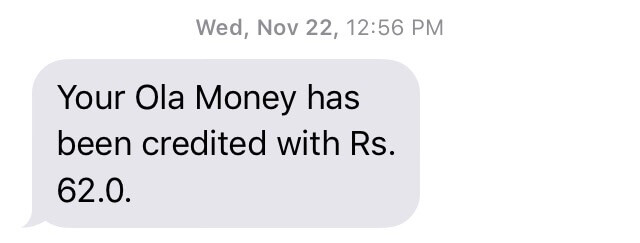
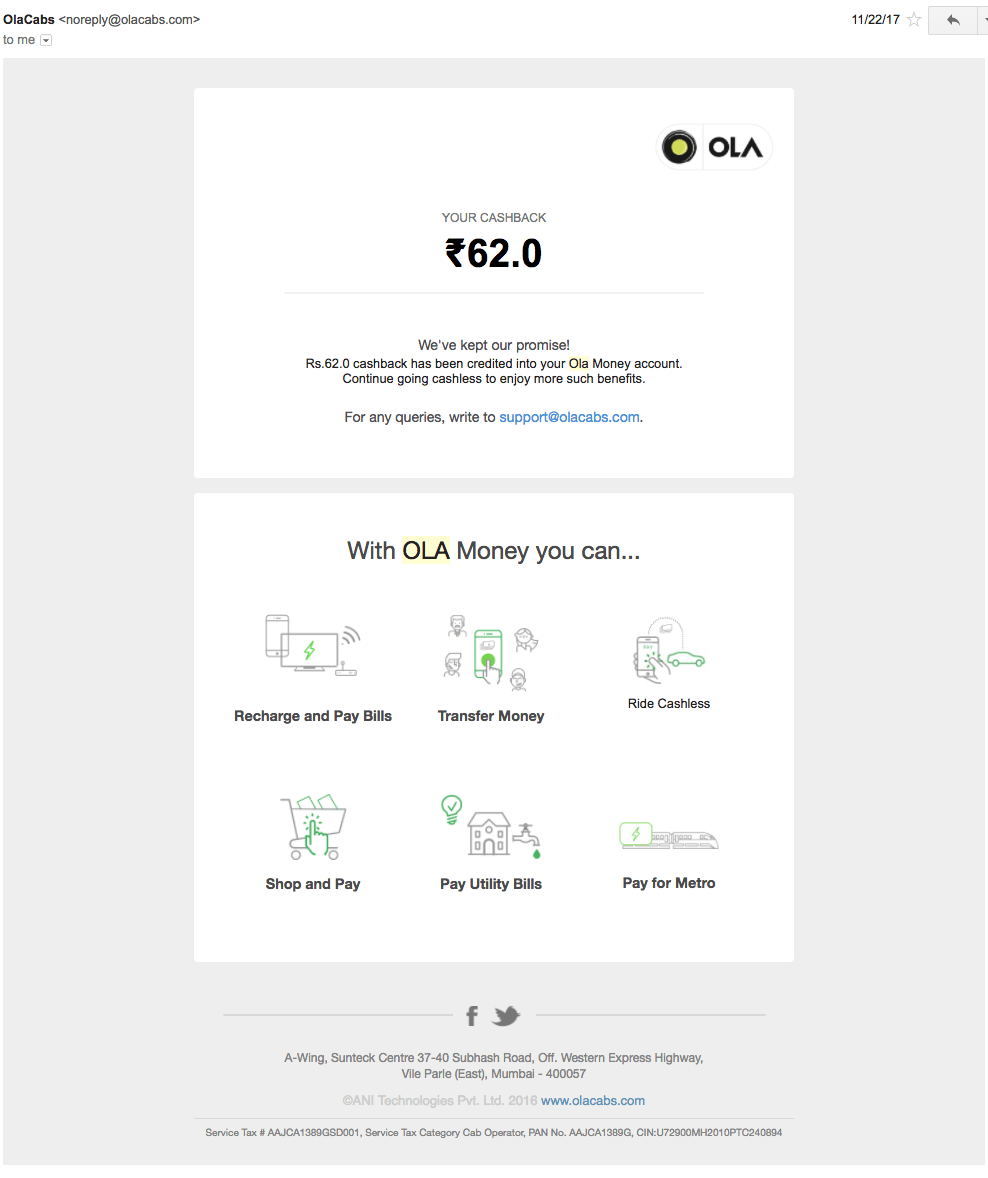
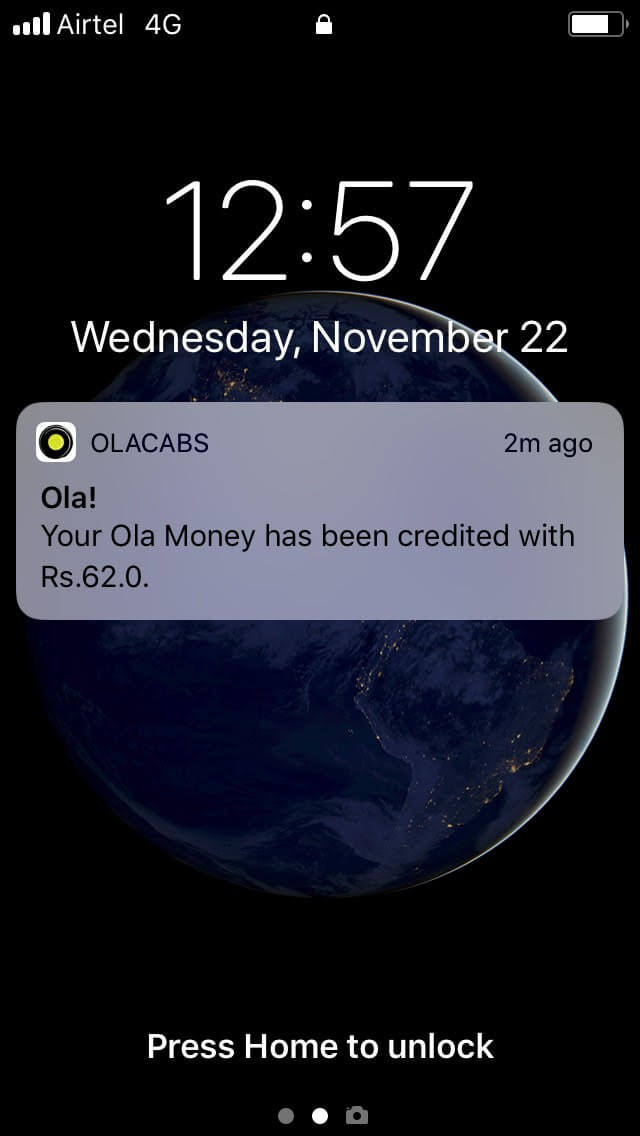
Ola’s multi-channel engagement strategy is leveraged very effectively to help users stay in the loop. I canceled a pre-paid ride that was booked online via the Ola Cabs app. Ola conveyed the refund message via SMS, Email & Push Notification channels to remind me that the money had been refunded. It would have been hard for me to miss ALL of those messages, and that is important when you have to share a user’s financial information.
Example 2:
Brand: Book My Show
Campaign Purpose: Multi-Channel Promotion
Industry: Online Ticketing
Channels Used: Email, Push Notification
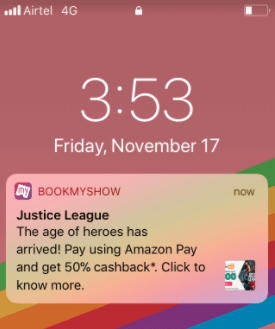
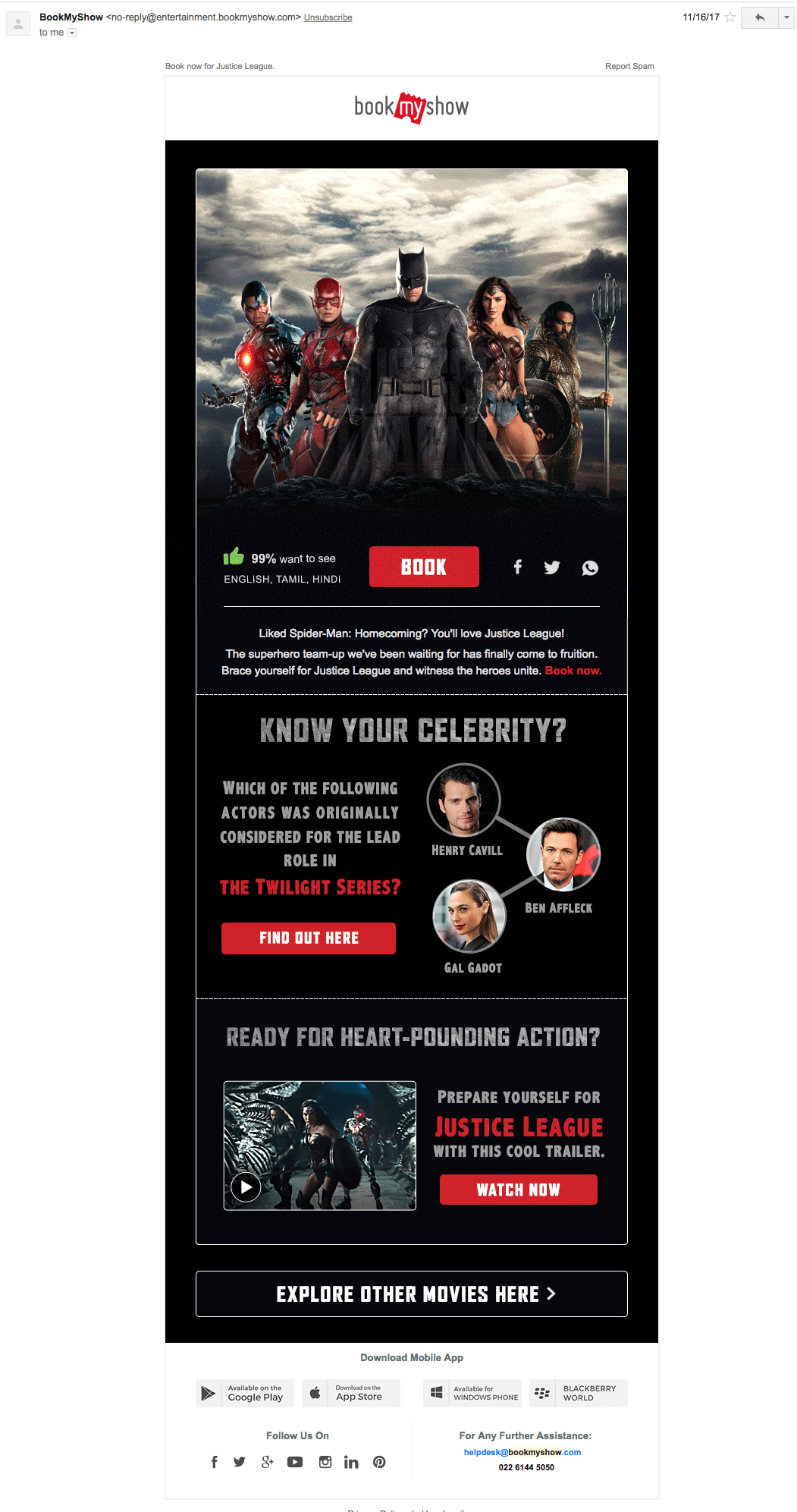
Online ticketing brand BookMyShow leverages a multi-channel strategy to maximize user engagement and increase conversions. The first piece of communication was received on the 16th of November advertising the release of the latest superhero blockbuster. I did not take any action, and they were quick to respond with a push notification on the 17th of November with a lucrative offer. (50% cashback, Indians are crazy about it.)
Example 3:
Brand: Redwolf
Campaign Purpose: Order Tracking
Industry: Online Clothing
Channels Used: SMS, Email
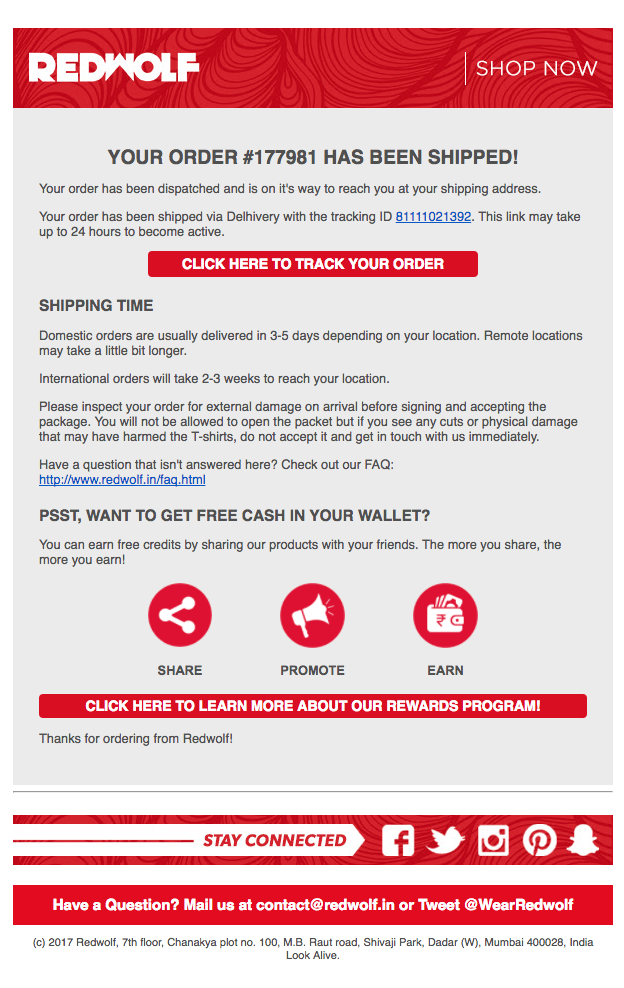
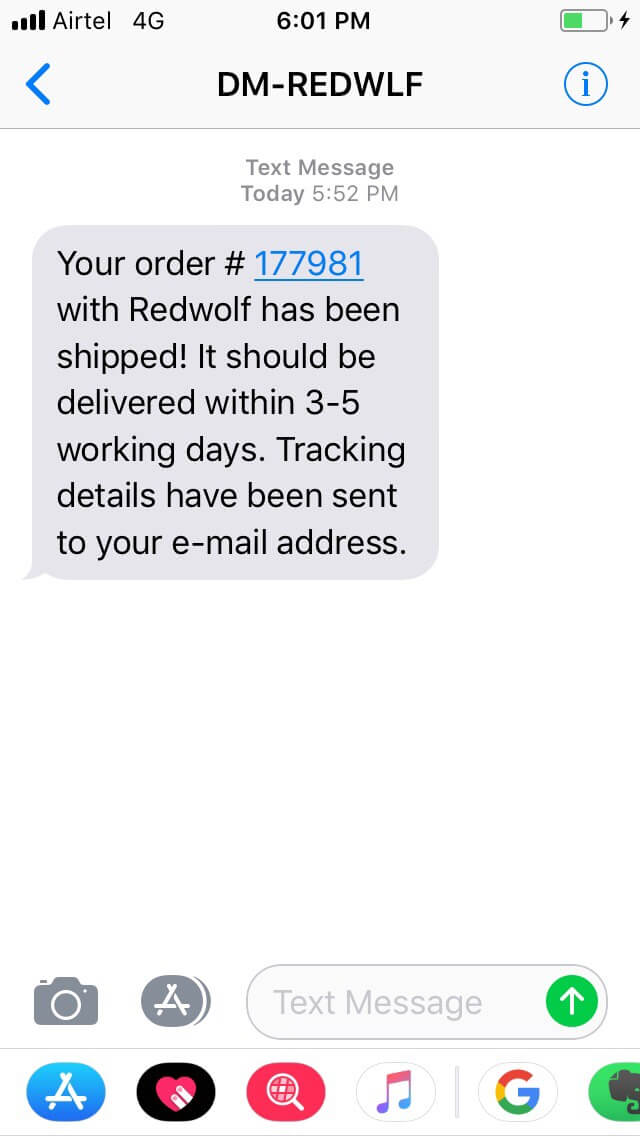
Online apparel brand Redwolf effectively deploys a multi-channel marketing strategy to enhance the user experience. They initiate the communication via SMS by letting users know when their order gets shipped. Subsequently, they send an email containing the tracking link, along with delivery related information (and some self-promotional content) thrown into the mix.
Example 4:
Brand: Zynga Poker
Purpose: Increase Gameplay Time & Event Traffic / Bring Users To The Platform
Industry: Online Gaming
Channels Used: Email, In-App Message, Push Notifications
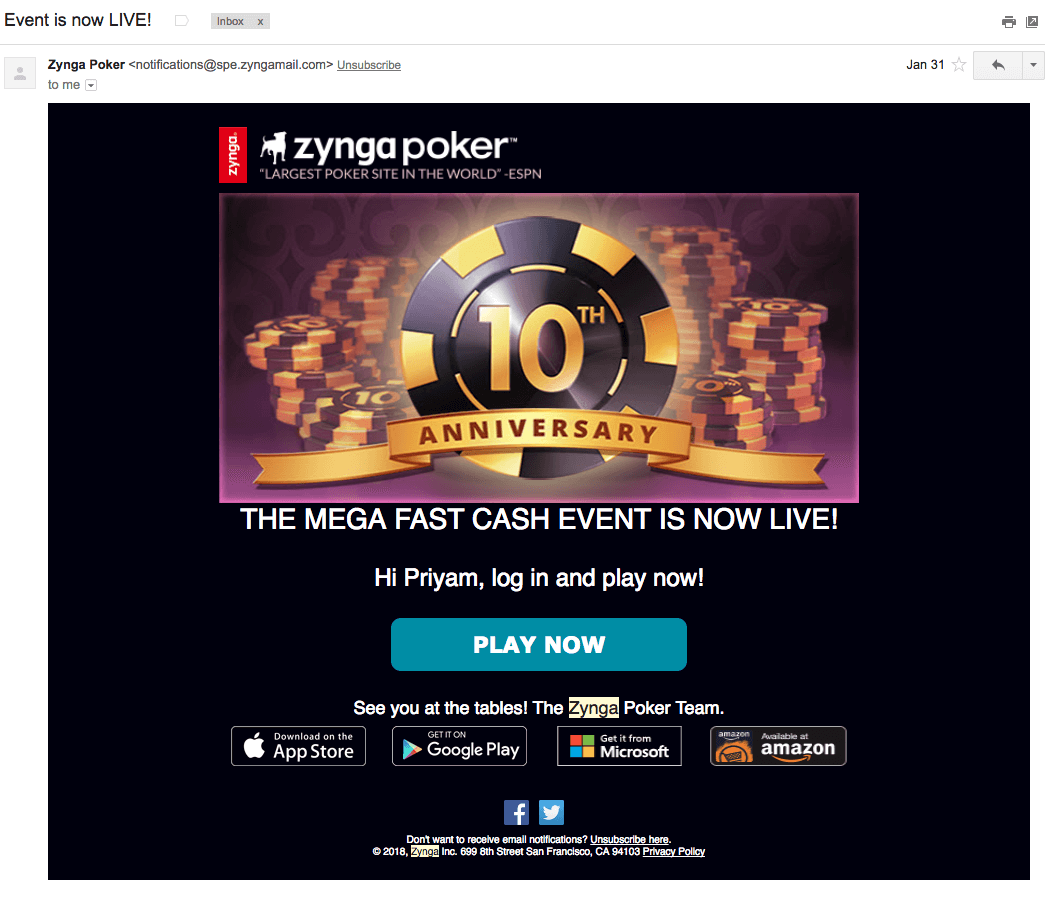
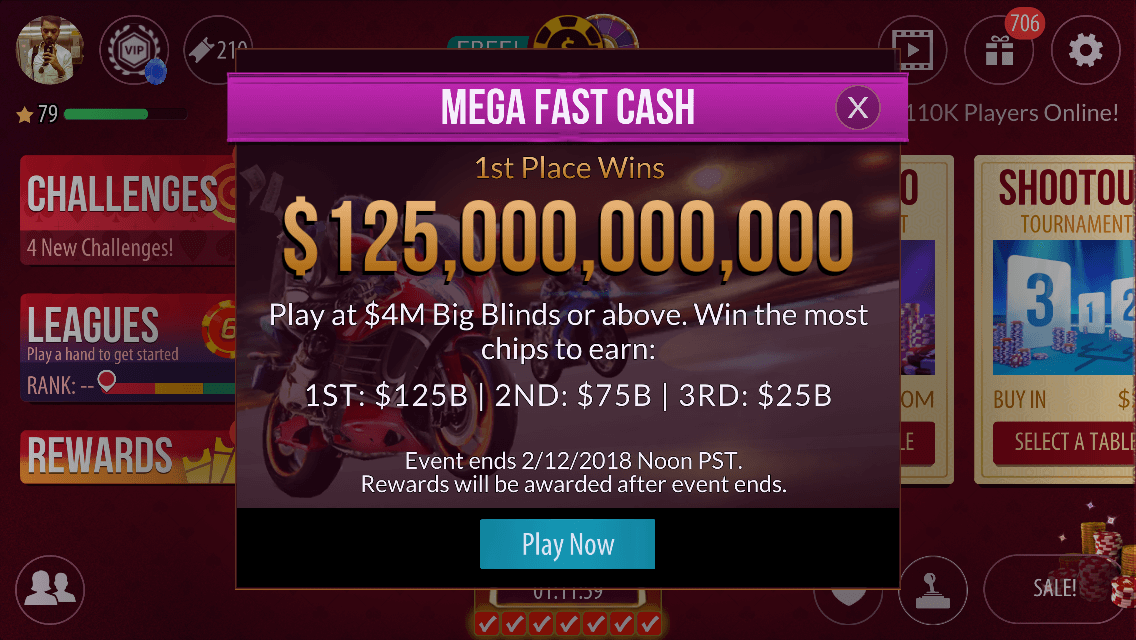

Zynga started promoting their in-game event with an email. They also sent multiple push notifications to get me on the app. In case I was in the app, they pushed a detailed in-app message that highlighted the event in question rather well.
How easy is it to create an effective Multi-Channel Marketing campaign?
Now that you have become aware of the pressing need to have an intelligent multi-channel strategy, you are going to be wondering about the ‘How to’?
You can simplify your retention marketing efforts by using a Marketing Automation platform. Create an elaborate, intelligent multi-channel campaign for your business with ease.
1. Define your campaign purpose
Right at the onset, you must define the intended result of your multi-channel strategy. Broadly, a multi-channel strategy can be for the purpose of Acquisition, Retention & Information. Based on their end-result, the campaigns will differ in terms of their reach, message, and execution. For example, an informational campaign about a government regulation change might be sent to your entire user base, but a retention campaign might be targeted to a small segment of users who are about to complete 1 year with your brand.
2. Conduct user analysis
Data analysis will generate powerful insights about the user and their online behavior, likes, and preferences. Start formulating a user profile based on the personal data (user’s name, age, location, income status, preferred language etc) and behavioral data (search query, favored brands and products, past purchase data, average spend etc) that your business invariably collects.
3. Examine multi-Screen behavior
Pick-up on cross-device usage that is exhibited by your user while accessing your brand’s website or app. You can then attribute the total number of devices used by a particular user, the number of times they log on using each device and the time spent on each device, and the device that is used for general search and viewing, and the device that is used to make a purchase. At the end of this exercise, you will know which device is more preferred, and the time-based usage patterns of each user.
4. Create user segments
Based on your core strategy and the data collected in the above 2 steps, create user segments to create highly targeted campaigns. For example, Your core strategy is Retention, and you wish to increase the number of repeat purchases for known users. The first step will be to filter all the users who have transacted in the last 6 months. Data analysis will help you identify X number of users who have bought products from ABC brand via a mobile app but initiated the search from a desktop. This can become a hyper-targeted segment in this particular use-case.
5. Choose communication channels
Now that you know which segment of users you wish to target, you need to decide on the message channels. Continuing the example listed above, this particular segment consists of users who have initiated a search on the desktop, but ended up purchasing via a mobile app. So, you can create a campaign including Email, Web Notification, Mobile Push Notifications, In-App Message, and SMS.
6. Create personalized Multi-Channel message
For each channel, craft personalized messages that resonate strongly with your target segment.
- Email: Remind the user about the time that has elapsed since their last purchase, and urge them to transact again by promoting their preferred brand’s new launches. Personalization tokens should include: user’s first name, last purchase details (product + date) and recommend a product belonging to the user’s preferred brand.
- Web Notification: Initiate a web push message promoting a product similar to the last purchase that belongs to a preferred brand, and also falls in the average spend category of the user.
- Push Notification: Use this channel to push a lucrative, time-bound offer that increases the value for the end user. Send a limited offer discount code that will motivate the user to take action and perform the action inside the mobile app. Personalization tokens should include First name, preferred brand, customized discount code.
- In-App Notification: Create an urgency in your in-app message to drive immediate action within the app via deep linking. Leverage past behavioral information to highlight key events and triggers to enhance the possibility of message engagement.
- SMS: Use SMS as a last-ditch reminder to remind your user about the limited-period offer that is about to end. Leave a link that will take the user back to their preferred point of purchase (app/website).
Summing it up
A multi-channel marketing strategy will see tremendous engagement compared to your run-of-the-mill single channel campaign. Why? Because your messages will be:
- Highly targeted
- Contextual, thus providing true value
- Directed by logic using real-time data
- Reaching every single user touch-point that matters.
Hope you found this post useful. If you have anything else that I might have missed out on, please let me know in the comments below.
- 15 Brilliant Examples of B2C Marketing Automation (That Work)
- 9 Marketing Automation Trends Of 2018 That Will Drive Growth
- Hyper-Personalization: Why It Is The Future Of Marketing
- 10 Ultimate Examples of Automated Email Marketing Campaigns Are What You Need to Get Started
- How to choose the right mix of marketing channels in a multi-channel world

































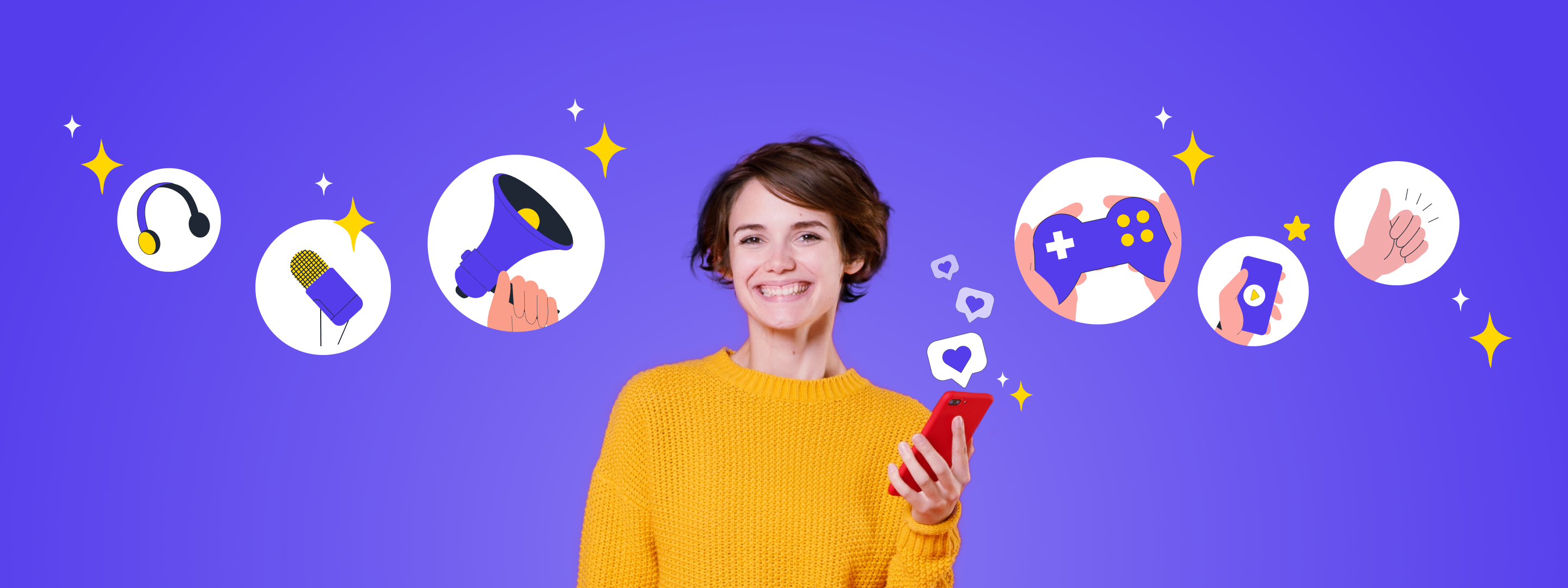
 Diksha Dwivedi
Diksha Dwivedi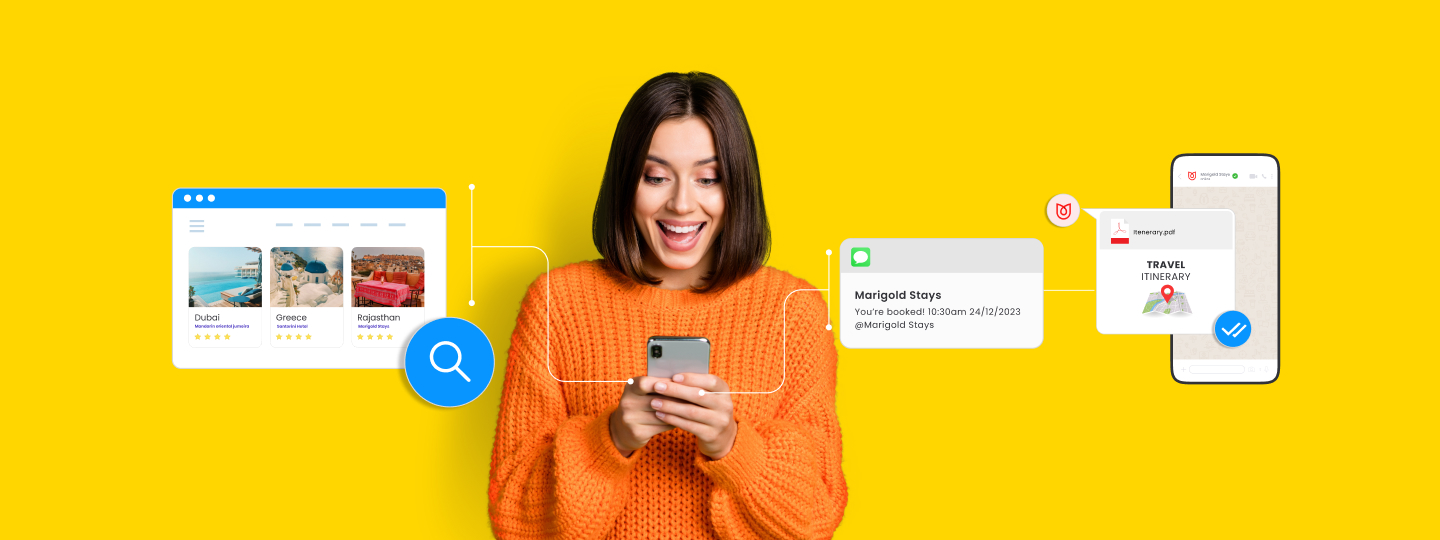
 Vanhishikha Bhargava
Vanhishikha Bhargava




